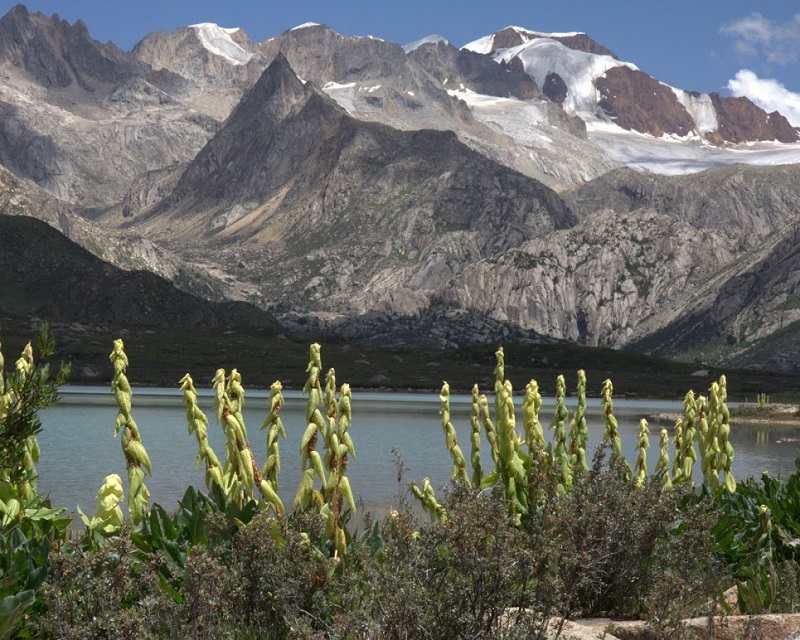DNA tests and fossils suggest it’s the oldest on Earth

Shrubland on the Qinghai-Tibet Plateau. Credit: Ding Wenna
You could be looking at some of the oldest temperate alpine flora anywhere on the planet.
A new study suggests the diversity of plants in the species-rich Tibet-Himalaya-Hegduan (THH) region can be traced back to newly formed mountain ranges 30 million years ago and the monsoons that followed.
As such, it has continuously existed for longer than any other alpine flora and is a concrete example of how climatic and environmental changes influence life on Earth, says a team led by the Field Museum in the US and the Chinese Academy of Sciences.
To find out how plants are distributed in China’s Hengduan Mountains, Himalaya and the Qinghai-Tibet Plateau – and how they got there in the first place – the researchers used what are known as phylogenetic reconstructions.
As described in their paper in the journal Science, they compared the DNA of different species, determining how closely related they were to each other and how they evolved.
By looking at the differences in the DNA and using fossil plants as benchmarks for how long it takes new species to arise, you can make an educated guess, they say, as to how long ago their common ancestor lived and figure out the family tree that makes the most sense.
They found that many of the plants evolved in the Hengduan Mountains then, as the Indian tectonic plate collided with Asia, slowly creating new mountains, a number of new habitats formed on the mountain sides and in the valleys below.
As the mountains formed, the region began to experience more intense monsoons, possibly because the mountains altered the prevailing winds, creating new conditions.

The snow-capped peaks of the Hengduan Mountains. Credit: Rick Ree, Field Museum
“The combined effect of mountain-building and monsoons was like pouring jet fuel onto this flame of species origination,” says Field Museum curator Rick Ree.
“The monsoon wasn’t simply giving more water for plants to grow; it had this huge role in creating a more rugged topography. It caused erosion, resulting in deeper valleys and more incised mountain ranges.”
The theory, Ree says, is that if you increase the ruggedness of a landscape, you’re more likely to restrict population movement because it’s harder to cross a deeper valley than a shallow one. “So any time you start increasing the patchiness and barriers between populations, you expect evolution to accelerate.”
And that, the researchers say, is exactly what they found when they reconstructed the genetic family trees. As the landscape grew more rugged over time, the now-isolated populations of plants veered off into their own separate species, resulting in the biodiversity we see today.
“The rich alpine flora of the THH region has been shaped by a long and complex history of colonisation, local recruitment and in situ diversification driven by mountain building and climate change,” says Xing Yaowu, from Xishuangbanna Tropical Botanical Garden.
“The Hengduan Mountains are not only the cradle of alpine plants. They are also the primary source of alpine lineages colonising the Himalaya and QTP…”
There are also lessons for the present, says Ree. “This study sheds light on the conditions under which we get rich versus poor biodiversity. Mountain ecosystems tend to be very sensitive to things like global warming, because the organisms that live there are dependent on a tight range of elevation and temperature.”
URL:
https://cosmosmagazine.com/nature/plants/diverse-alpine-flora-has-some-serious-history/ 

